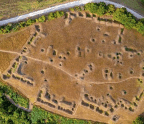From fire to frying pan
February 21, 2002. It’s 5.30pm and in her third-floor office at the Institute of Environmental Science and Research in Mt Albert, Auckland, forensic scientist Sue Petricevic has one more job before she can leave for the day: examine a spreadsheet of the latest results of tests comparing the DNA of hundreds of Hawke’s Bay men against that of the offender whose semen was found on murdered six-year-old Teresa Cormack in June 1987.
It has been 11 disheartening months since the screening samples began arriving at ESR after Petricevic extracted the DNA profile from the semen sample that had been stored for 14 years waiting for the technology to advance sufficiently to test it, knowing that a failed attempt would destroy it – along with the last chance to identify the killer.


“In the cells, the stress is being able to connect with the person you are representing and doing the
You’re reading a preview, subscribe to read more.
Start your free 30 days





